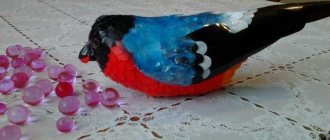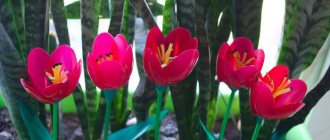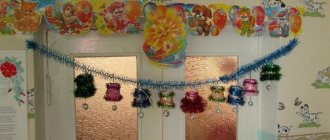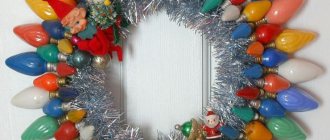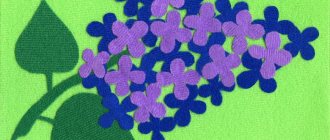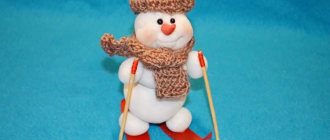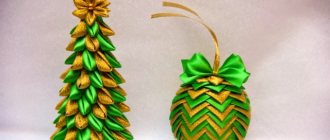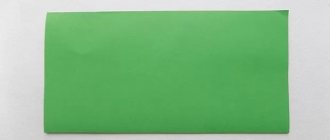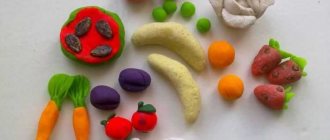Reed weaving is one of the most ancient crafts. The art of pottery began with him. Did you know that the first bowls, vases and pots were woven from reeds and smeared with clay? This simple and affordable type of needlework is very popular today.
Reed weaving is an easy way to keep your hands busy or create something very attractive for your home. I am attracted by the low cost of the hobby and the availability of materials for manufacturing. It is worth noting that reed is a very convenient plant for weaving, because you can find it anywhere - near ponds and swamps. It is easy to prepare and very pliable.
And it’s surprising that this is such a simple and affordable material, and baskets, furniture, mats and reed roofs made from reeds are one of the most expensive pleasures. We are pleased to share with you the skills of preparing and weaving from such an interesting material. It will be easy for you to learn reed weaving skills for beginners. We have prepared enough information about the preparation of material and a successful master class.
Decoration methods
A fence made using this material is itself a very decorative and original structure. In order to make your fence more unusual and give the structure a characteristic rustic atmosphere, you need imagination and various additional elements. These are various figurines using wicker, pottery, and cart wheels. The flowers look especially beautiful. They can be planted along the fence or planted in wicker pots.
Beginning needlewomen and craftsmen are faced with the problem of material. At first it is difficult to decide what kind and nature of crafts you want to build. Then the question arises of what material to use and how to work with it correctly. Therefore, you should study the topic of future crafts in advance and make a choice. To weave from reeds, you need to know some subtleties about preparing reeds for a product for beginners. After studying the details of this matter, you will know how to weave a fence, mat and any other things from reeds and cattails.
There is nothing difficult when choosing any weaving technique. It is important to know the basics of some knots, patterns, or the basics of constructing structures in order to simply start working with crafts using one or another weaving technique with your own hands.
By choosing reeds as the basis for crafts, you can easily build not only baskets and hats, but even slippers. The world of crafts made from this material is very diverse, so don’t even think about them, but start doing them. Numerous master classes and schemes for performing work are not uncommon for modern needlewomen and craftsmen.
Looking at beautiful wicker baskets, hats and accessories, we admire the skill of their creators. Humanity has not reached unprecedented heights in weaving from cattails and reeds in one day - the art of weaving is more than 8.5 thousand years old.
Preparation of material
Reeds and other marsh plants are harvested in June-July or September. The stems of this plant are very fragile, so it is better to harvest them in small bunches. Cut and harvested stems must be dried before storage, for example, hung under a canopy or stacked in bunches in the attic so as not to expose them to sunlight. If the sun's rays hit the stems, they fade, lose their natural color and become too fragile.
Please note that in plastic bags they become covered with black spots and become unusable.
By choosing reeds for crafts, you can easily build not only baskets and hats, but even slippers. The world of crafts made from this material is very diverse, so you don’t even need to think about it, but just start making them! Numerous master classes and schemes for performing work are not uncommon for modern needlewomen and craftsmen. Here are some inspiring photos:
Next we will learn how to weave a basket for small items with our own hands. This master class was created to teach you how to use simple little things to make crafts and learn a lot of new and useful information. If you correctly follow all the recommendations, you can perfectly master the technique of making products from reeds and cattail leaves.
Cattails are often called rushes, although the only similarity between them is that they are perennial herbaceous plants.
To make a basket for small items from reeds you will need:
Mat
If you are a beginner in this craft, you should first try weaving a reed mat. This product does not require anything special, including a lot of practice in weaving. You will need twine, reeds and a little patience. In return, you will receive an interesting, original item and master weaving skills.
The amount of harvested reeds depends on the size of the mat. For a meter of mat you need to use a roll of twine, 4 slats and screws.
Let's prepare a place to work.
Construction of a fence
A do-it-yourself reed fence is built in several stages:
- Cutting and drying reeds.
- Making mats.
- Direct construction of the fence.
Harvesting reeds begins in the fall - in September-October. The plant can be mowed or cut with a sickle at the very base.
You should immediately clean it of leaves and fluff and carefully tie it into small bundles.
You can clean the reed with a homemade brush. To make it, hammer long nails into the plank in several rows at a distance of 1.5 cm.
Find a place to dry the prepared reed bundles.
note
: the color of the future fence depends on where you dry the reeds: a plant dried in the shade is green, in the sun it is yellow.
The size of the mats, easy to install, is 2 m in length and 10 cm in thickness. The height depends on the prepared raw materials and your desires.
Harvesting reeds
Harvesting not only reeds, but also all other marsh plants occurs in June-July. Or mid-September. Speaking about reeds, we note that they are harvested in small bunches. It is cut, washed and processed, removing excess dirt. Before sending the reeds for storage, they must be laid out under a canopy or spread in the attic so that the sun's rays do not fall on them. Only when all the excess moisture has gone can it be collected into bundles and allowed to dry.
If the reeds are exposed to the sun's rays during drying, the material will burn out and become brittle.
Features of work
A reed fence is a natural and quite original fencing.
We start with preparing the material. Reed grows almost everywhere near rivers and is harvested in September-October. During this period, the plant reaches its optimal height, which is important when constructing a fence. Before you start weaving, you need to make a simple workbench for making mats.
The length of your table should match the height of the future fence. We spread the material on the table in a thick layer ranging from 15 to 20 cm. Then we lay boards on it, with the help of which the plant stems are fixed. Next we perform the firmware.
It is very similar to the firmware of a regular broom.
Before making a wicker fence from reeds, you should think about the fastening system of the fence. You can use various materials, for example, wooden beams. But better and more reliable are metal poles or pipes. We attach the finished, stitched mats to the posts using wire. The fence must be treated with a special protective fire-fighting agent, since reeds, under certain conditions, flare up like a match.
There are various variations in manufacturing. For example, you can make a fence using alternate sections, as well as using branches and mats. An excellent option can be made using a mesh - chain-link.
Properties of reeds as insulation
Thanks to its tubular structure, reeds provide thermal insulation as insulation in buildings at the proper level. An insulating layer 15-20 cm thick retains heat as effectively as laying a wall with one and a half bricks. In addition, reeds are characterized by good sound insulation - noise from the street will be practically inaudible.
If you make insulation from reeds, it will not only retain heat, but will also allow air to pass through , allowing the room to “breathe.” It is not susceptible to destruction by fungi and microorganisms . rodents do not grow in such insulation , as they die upon contact with it. Due to the low weight of the material, when insulated with reed reeds, the load on the foundation is minimal, which allows it to be widely used for construction purposes.
Advantages of reed insulation:
- environmentally friendly material;
- high thermal insulation rates;
- dries quickly after getting wet;
- natural inexpensive material;
- does not get lost or cake due to the special structure of the stem;
- easy to install;
- provides good sound insulation.
Do-it-yourself weaving from reeds and reeds for beginners
Builder 4th category
It’s not at all difficult to master weaving techniques and learn how to create exclusive products from natural materials. Each stage of reed weaving is interesting and exciting: collecting and preparing material, mastering weaving techniques, creating exclusive products. It’s worth a try and perhaps it will become a real hobby or the basis of a business.
Workplace. Making a Simple Weaving Loom
To weave reeds you need a suitable place. Since weaving and weaving are time-consuming activities, you need a place under a canopy so that in case of rain the product will not be damaged.
A loom is also needed. To do this, make a frame from slats the width of the future mat. Mark parallel slats corresponding to the width of the desired product along the entire length in centimeters. Drive a nail or screw into each marking in a checkerboard pattern. Stretch the twine every second centimeter. There must be an even number of segments.
Weaving a mat
Reed weaving is very simple, let's get acquainted with it. Take one leaf and pass it under each even thread. Start weaving from the bottom of the frame. Pass the next sheet under each odd numbered one. The next one is even. Thus, you will get a fabric with a checkerboard or brick weave. Weave the fabric to the length you need.
When you reach the desired size, cut off the excess pieces of stems at a distance of 4-5 centimeters from the thread.
The almost finished product just needs to be secured. To do this, take one stem and sew it from the wrong side with large stitches. Do this on each side.
Cut the threads in pairs from the screws and tie them, pressing them tightly to the product. Cut off any excess thread. Your mat is ready. It can be used in many ways: as a mat, as a yoga mat or as a beach blanket. So, a mat is an interesting stand for hot food or a whole tablecloth for the country house.
You can weave various things from reeds. See what products you can create yourself. What attractive reed roofs, what interesting reed fences.
Reed baskets are very convenient for storing various small items or as decoration for the kitchen. And what cute wicker beach hats.
Weaving from reeds also involves weaving bast shoes. A very interesting product that can be worn or used as decoration.
Basic techniques
Any reed weaving workshop involves preparing stems and leaves using a sharp knife. The leaves are cut lengthwise into 3-4 parts. The stems are freed from small leaves.
The easiest way is to weave strips of leaves or stems at right angles. It is convenient to braid some solid base. This way, you can adjust the density of the weaving and make it easier to maintain proportions.
There are several basic reed weaving techniques for beginners:
- A bow is a method of weaving with one working stem around 2 warp stems. The working stem covers the stems of the base in turn with an S-shaped loop, moving along them. This weaving method is suitable for making voluminous products. You can weave not only lengthwise, but also in a circle. Weaving with a bow looks very impressive.
- Rope is a method of longitudinal weaving. This technique is ideal for making baskets because it requires vertical supports. Long stems intertwine with each other and with the stems of the vertical base.
Both techniques are easy to learn, but require practice.
Collection and preparation
Material collection occurs from August to October. It is important to cut the selected plant species directly from the water. Plants from a dry bank will be fragile and brittle. The most convenient way to cut plants is from a boat using a long-handled sickle or by climbing into the water in wading boots.
The stems are tied into small sheaves and dried in a vertical position, preferably in the shade. But you can also do it in the sun. The type of drying affects the color of the plants: in the sun they become lighter and more golden.
It is best to store the prepared material outdoors under a canopy or in the attic in a horizontal position. It is important not to store them in plastic bags. This leads to the formation of mold.
Before starting work, it is recommended to soak the required number of stems and leaves in water.
But if the material is collected in the right, damp place, it is enough to simply spray them with water. And also, if necessary, you should spray them periodically during work. The plants themselves will indicate that this needs to be done when they begin to crack slightly when bent.
Plasticine model
Plasticine reeds are made using a toothpick. To make the bush look prettier, it is better to cut them into different lengths. For one reed, twist two strands and flatten them. We make a large ball for the base of the plant; if you make it small, the reeds will fall.
Take a toothpick, coat it with green plasticine and stick it into the ball. We use brown plasticine to create a plant head on top, so that the edge of the toothpick protrudes from this part.
After this, we apply the leaves to the stem and press them to the center, and bend the edges a little. The wonderful reed for plasticine crafts is finished.
How to make reeds from paper? Simple idea for kids
Interested in the question of how to make reeds from paper? Check out the simple idea presented with step-by-step photo instructions.
We used:
- Brown cardboard;
- Double-sided green colored paper;
- Green corrugated paper;
- Kebab stick;
- PVA glue;
- Felt pen for creating a rocking chair;
- A milk cap and plasticine to secure the craft in a vertical position.
How to make reeds from paper?
Making a rocking chair
For it you will need a triangular piece of brown cardboard. It should be quite long so that the rocking reed turns out to be quite voluminous, and not thin, like a kebab stick. Based on the size of the kebab stick, the approximate dimensions of the triangle can be as follows: the narrow side is 8 cm, and the two long sides are 25 cm and even across the entire length of the A4 sheet.
Using a felt-tip pen, pencil, pen, or any thin tube, make a rocking chair, turning the triangle into a paper-like bagel. Simply wrap the marker in paper until you reach the very tip. Start from the side where 8 cm.
Remove the rocker, if necessary, release it a little to make it freer and secure the tip with glue.
Paper reed stem and leaves
Cut a long strip of green corrugated paper, place a drop of glue on the blunt tip of the stick and begin to wrap the corrugated strip around it, periodically securing it with glue. Glue will also be needed at the very tip of the stick.
If you don’t have kebab sticks or corrugated paper, you can make a stem from a sheet of green paper, rolling it into a thin roll.
Glue a reed rocker to the resulting stem, not forgetting to leave the tip of the stick sticking out on top. If you want the stem of the reed to be in the center of the rocker, and not on the side, wrap a little more paper at the top of the kebab stick, apply glue to this thickening and put the rocker on top.
This way the sides of the rocker will be at the same distance from the stem.
Cut out two long leaves from green paper, almost the size of a kebab stick.
Glue the leaves, securing them with glue at the bottom. The leaves can be corrected with a pencil, a beautiful curve or even a fold can be made on one sheet.
Now you know how to make reeds from paper, all that remains is to place the craft in a vase. Alternatively, glue plasticine into the lid and stick reeds there.
How to make a fence and hedge from reeds with your own hands
A fence made of reeds is a very impressive fencing, which, if desired, can be made with your own hands. Such a fence can be practically free if there is a forest belt or pond nearby where this plant is abundant.
Appearance of a reed fence
Return to contents
Main characteristics and advantages of reeds
Reeds are ubiquitous and can be found near lakes, rivers, and wetlands. This plant is very unpretentious, grows quickly, occupying new territories, and grows to a considerable height during the season. The length of the reed stem can be higher than human height, so it is a very good material for constructing natural decorative garden fencing.
Option for the design and decoration of a reed fence
Since ancient times, reeds have been used as a building material for houses and other buildings. Residents of villages and fishing villages located along the banks of rivers built houses called “mosaics”. Sheaves of reeds were tied and coated with clay. Nowadays, this natural material has not lost its relevance, especially for lovers of traditions and fashion trends of ethno style. Reeds are used to make fences, walls, and cover roofs. Modern designers use this natural material to decorate and decorate the interior.
Among the advantages of reeds as a fence it is worth noting:
- environmental friendliness of natural material;
- the ability to humidify the air and bring coolness in extreme heat;
- excellent sound insulation properties;
- minimal costs for raw materials;
- protection from prying eyes;
- rodents and insects do not like to live in reeds - its bark contains a lot of calcium;
Ready-made reed sections for installing a fence
- simple installation that you can do yourself;
- naturalness and organic nature of the fence;
- fairly long service life;
- spectacular appearance.
You should also take into account the disadvantages of reed fencing:
- The main and significant disadvantage of a reed fence is its strong flammability. In dry weather, even a small spark or a thrown cigarette will cause the fence to flare up like a match. Treatment with fire retardants is mandatory, although this will significantly reduce the main advantage of the fence - environmental friendliness and increase its cost.
- A reed fence serves more of a decorative function. It will protect the area from animals and protect the yard from curious passers-by, but is not designed for heavy loads.
Regarding the durability of the fence, it is worth saying that the service life of the reed fence will depend on the configuration of the fence. If the stems of the reeds touch the ground, then in this place the fence will begin to quickly collapse.
An example of the design and fence posts of a reed fence
If the fence is raised, its service life can last several decades. Return to contents
Harvesting reeds
To make a wicker fence, reeds are harvested in the second half of August and September, after the leaves turn yellow. Reeds are also often cut in winter. Plants are mowed with a scythe, brush cutter or sickle at the very base of the stem. It is advisable to immediately lay the raw materials in neat bunches.
The reeds need to be cleared of leaves and fluff. It is better to do this on site so as not to bring garbage onto the site. To clean the stems, a special brush is used, which you can easily make with your own hands.
To do this, a row of nails is nailed through and through onto a wooden plank approximately 10 cm wide. The nails need to be long enough - from 7 cm, they are driven at a distance of 1 - 1.5 cm from each other. The sharp ends of the nails of this improvised comb are used for combing.
The process of harvesting reeds for installing a fence
Dry the reeds by tying them in small bundles or laying them out on a dry surface in natural conditions (not near heating devices or radiators). The color of the future fence will depend on the conditions in which the reeds were dried. In the sun, the stems will acquire a warm golden color; in the shade, the raw material will remain a light green hue.
With the onset of spring, when the raw materials are completely dry, you can begin building the fence.
Return to contents
Installation of a reed fence
The optimal size of a reed mat is: 2 m length and 10 cm thickness. There are several easy-to-do-it-yourself technologies for making reed fencing.
Return to contents
Making reed mats
Reed slabs produced on an industrial scale are highly valued - and their cost is not cheap. How to make high-quality fencing slabs from this free material with your own hands?
Making a simple machine
- A frame of the required size is made from timber.
- A series of pegs are driven inside the frame. The distance between the stakes will depend on the desired thickness of the mat - from 5 to 12 cm.
- Galvanized binding wire is laid between the stakes.
- The reeds are placed between the pegs in even bundles and wrapped with wire.
Making mats on a workbench
- A workbench table is made to fit the size of the mat, which can be made from simple boards. It is important that the surface is smooth. Gaps are left between the boards so that the binding wire can pass between them. This is what a machine for making reed mats looks like
- The reeds are laid in bunches on a table approximately 20 cm thick.
- A frame is placed on top to press the stems more tightly.
- The reeds are stitched with knitting wire in at least four places.
- After stitching, the ends are trimmed evenly on both sides.
The easiest way
- The reed stems are evenly laid on the wire.
- Another row of knitting wire is laid on top of the stems.
- The top and bottom wires are fastened with steel staples.
Another option
- The stems are tied on one side into equal sheaves of the required thickness.
- The sheaf at the other end is split into two and tied to another bundle.
- The resulting structure is fixed to a wooden frame.
Tip: to make the reed mat uniform, the stems should be laid alternately, one half with the butt up, the other down.
Finished reed canvases are secured to installed support posts made of wooden beams or metal. Tie wire is used for fastening. Wooden fence posts and mats are treated with fire-fighting and antiseptic agents.
Despite the rapid development of technology, natural materials are very attractive to designers and builders. More and more people want to live in harmony with the environment and prefer to use raw materials provided by nature itself. A reed fence is a decorative fence that will allow you to decorate your site in a relaxed and lively country or Provence style.
Where is reed mat used?
- As a natural roofing material in areas with heavy rainfall;
- This is a natural insulating material that can withstand low temperatures well;
- As hydraulic drainage on sandy soils;
- Reed mat is also used for decorative cladding of facades of houses for various purposes.
Advantages of reed mats
This is an environmentally friendly material; it does not absorb radiation and heavy metals. Thanks to the capillaries, the room “breathes” and the optimal temperature is maintained inside. The reed mat does not allow moisture to pass through, the reed is a natural antiseptic and has antibacterial properties.
The price of a reed mat is comparable to that of expanded polystyrene (foam), but the installation technology is simpler. Among the disadvantages of reed mat, it should be noted that it is highly flammable; rodents and parasites also “love” it, so additional treatment with protective compounds and fire retardants for wood cannot be avoided.
Basketry
It is advisable to start weaving reeds with your own hands with simple products: napkins, small baskets, bread bins. For such products, cattail or reed leaves, cut into 3 strips, are best suited.
After mastering the principle of weaving, you can move on to more complex products. Braided bottles or vases look beautiful and unusual. Such products are most often made from thin reed stems. Having a solid base will make the job easier.
As your skill increases, you can move on to making boxes, sugar bowls, hats, and handbags. These items will require mastery of several weaving techniques.
A fence or hedge made of reeds will require a minimum of knowledge of weaving techniques, but maximum effort in properly preparing the material. The prepared sheaves of reeds are trimmed evenly, pulled together and woven into rectangular blocks. A fence is formed from them. In order for the fence to fulfill its function, a base in the form of metal posts or chain-link mesh is required.
Weaving from stems and leaves is a useful and exciting hobby. Design elements made of reeds, reeds or cattails are very popular and relevant. They serve not only as decoration, but are also quite functional. Constantly touching natural materials and going out into nature to gather materials are very beneficial for health.
Weaving materials
Lake reeds, reeds, and cattails are suitable for reed weaving for beginners. These plants are similar, but each has its own characteristics:
- Lake reed is a plant of the sedge family. Grows along the banks of small bodies of water. Tall grass of bright green color. You can recognize such a reed by the panicles at the ends of the stems. Good material for weaving. Does not require slicing, as it has smooth, thin stems.
- Common reed belongs to the cereal family. Tall flexible stems are crowned with a dense panicle. To make cane, the lower part of the stem and leaves are used. Depending on the idea and type of product, the leaves are cut into strips. You can find ordinary reeds along the banks of rivers, canals, and ponds.
- Cattail is often confused with reeds. After all, it is cattails that have dense brown seed heads at the ends of the stems, not reeds. How to make a fence from twigs with your own hands? Cattails have both stems and narrow and long leaves that are suitable for work.
In this video you will learn how to make a rug from reeds:
What does reed look like?
This type of plant is one of the most successful for crafts. There are two types of reeds: lake and forest, and the first is of great value.
This is a perennial plant with a thick rhizome. Its stems reach a length of up to 2 meters and a diameter of about 2.5 cm. This species most often grows in water, on or near the shore. Habitats: lakes, swamps and marshy meadows. It is found almost everywhere in the European part of Russia, and also grows in the Caucasus, Western and Eastern Siberia.
Pay attention to what the reeds look like, from which we will weave various products (photo below). View gallery
View gallery
Crafts made from reeds
join the discussion
Share with your friends
Reed is a unique plant from which you can make appliques or decorative figures, as well as baskets or trays. Both children and adults can make such crafts with their own hands.
Little owls
Wood can be either the main or secondary material. We use a cut of wood as a base.
- We sand the cut with sandpaper to make the surface smooth. We cover it with varnish or a special water-repellent agent;
- You will need a small twig, which we first paint with wood varnish;
- We draw birds on pebbles. We use acrylic paints. They do not spread and fit well on the surface. If not, you can use gouache, securing the drawing with varnish;
- Glue stones and a branch to the base. We finish the design with paint.
For small wooden owls, you can make eyes from different materials, including buttons.
Paper is an affordable and easy-to-work material that can be used by many.
Applications
Children really enjoy making applique. This is not only an interesting activity, but also very useful. Working with your hands develops fine motor skills of the hands and fingers. For this work you need to have paper, scissors and glue.
A great activity to spend your free time. Applications can also be voluminous. But this activity is more suitable for adults.
Applications using quilling technique
Quilling is translated as paper twisting. This technique involves twisting strips of paper to create chic compositions. It is quite common and beginner handicrafts can easily master this art.
To work with the quilling technique you will need:
- narrow long strips of paper. You can buy ready-made paper for this technique. It is sold in art stores and art salons.
- paper roll rolling device
- scissors
- tweezers
- PVA glue
- Ruler with circles of different sizes.
Master class “Making cattails (reeds)”
Elena Kudryashova
Master class “Making cattails (reeds)”
Popularly, a plant with brown candles found near a pond is called reeds . This is a mistake; in fact, the biological name of the plant is cattail . The confusion in the name is due to the fact that cattail is very common and stands out well in thickets, while reed is less noticeable , but has a sonorous name. Therefore, over time, all plants near water began to be called this way, in particular cattail .
To decorate a site, artificial ponds are often created and cattails will serve as decoration .
To make this plant you will need:
- artificial stem (it can be purchased at any garden store and it is called a bamboo support)
— plastic bottle 300 ml
- roll of plastic bags
– 2 sheets of X-ray film (can be used)
- self-adhesive green paper
- brown paint (possibly floor paint)
MANUFACTURING
1. Using an awl, make a hole in the lid and bottom of the bottle and push the stem through.
Original do-it-yourself flower beds
Are you not a sculptor at all? But believe me, you can make these creative flower containers.
We need a plastic container, foam plastic, reinforcing mesh. We make a cement solution by adding a spoonful of gypsum directly into the palm with the solution and thus form our “sculpture”
But not all of us are fans of modern abstract art. You can easily make garden crafts in a classic style.
But, because You are not a sculptor yet, you need a template - it could very well be an old doll.
Because If this is not just a decorative garden figurine, but a flower bed in the shape of a girl’s head, then the top part needs to be cut off.
This is a very simple process, and all the examples of this style that you see in the article were made by teenagers in a craft class.

